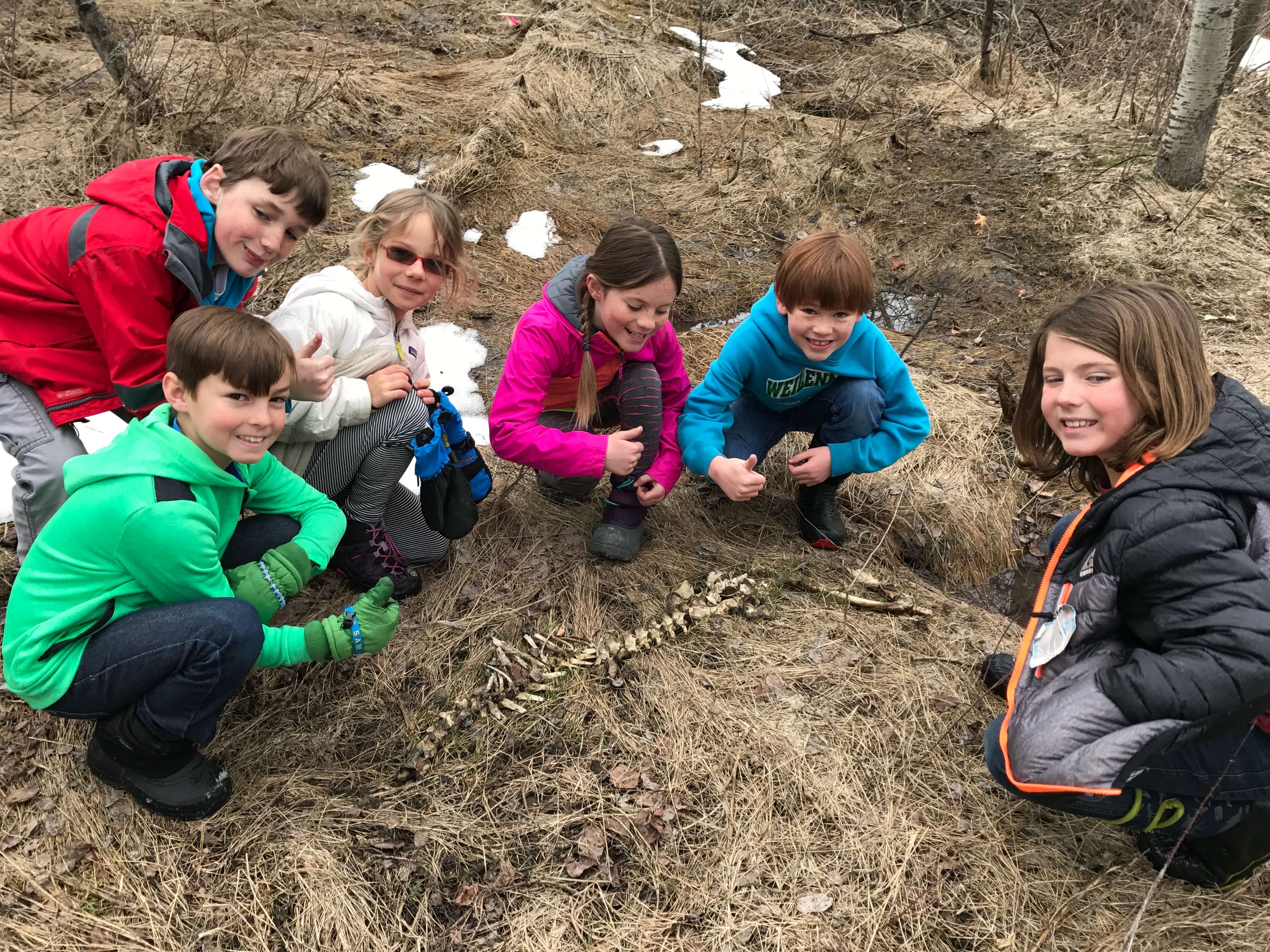Congratulations to Middle School Math Teacher, Jessica Hunsaker, who was recognized by the Utah State…
5. Walking on the Wild Side: Outdoor Education
“The secret of making the best persons,” Walt Whitman famously said, “is to grow in the open air and to eat and sleep with the earth.”
While most of us cannot raise our families entirely in the great outdoors, we can at least acknowledge that Whitman has a point. In an age where more and more children suffer from what some describe as “Nature-Deficit Disorder,” the importance of the outdoors in a child’s life is more important than ever. And the benefits, research tells us, can transfer to every area of a child’s well-being, not the least of which is success in school.
Time in the outdoors is a natural brain boost. It has been known to lower anxiety and stress levels in children, who return to the indoor classroom more relaxed and focused. And the open air and natural sunlight inspire an almost automatic optimism. “Call it the serotonin factor,” observes Executive Director, Cindy Phillips, “students feel free, autonomous, and even powerful in the outdoors. This is something they cannot get sitting behind a desk.”
Cognitive development gets a boost, too. A child’s awareness, reasoning, and observational skills improve with an increased exposure to nature, as does memory and attention (T.R. Dunlap, 2015). These kids also score higher on tests of concentration and self-discipline. At WSD, we notice a difference in reading comprehension skills between students with rich outdoor experience and those without.
“Real world experiences allow students to make connections to what they are reading,” explains Cindy Phillips. “We start to see this gap widen around third grade and on.”
Add these benefits to those realized in improved socialization, problem-solving, leadership skills, confidence and self-esteem, and it is easy to see why WSD considers outdoor learning an integral part of a child’s education.
In Kindergarten through second grade, students venture out with classroom teachers on a regular basis in order to hike, snowshoe, do outdoor learning, or recreate on the trails behind the school. This serves as an important outlet for student energies. It is a perfect time for them to explore, ask questions, use their imaginations, and develop a kinship with nature. Time on the trail is also an effective time to build community, establish good habits, and let the mind and body run free.
In grades 3 – 5, an outdoor curriculum is added, which teaches specific skills. Laura England, who directs the Lower School program as well as Middle School Adventure PE, lists among her goals helping students learn environmental stewardship, build memories and connections to the local landscape, face and solve real-world problems, and practice safety and personal responsibility. During this meaningful time with nature, students accomplish such tasks as using topographical maps and compasses, employing the principles of “Leave No Trace,” building snow shelters, or “quinzees,” recognizing plant and animal biodiversity, and simulating real-life first aid scenarios.
“I also believe it’s important for the kids to free play and be able to use their imaginations in a natural environment,” Laura is quick to add. “That empowers kids to think creatively and make decisions independently.”
Middle School students participate in Adventure PE, which explores various recreational activities and introduces students to new sports and skills. Students in this program build on previous outdoor learning in trail maintenance and etiquette, avalanche and beacon training, and service learning, but with an increased focus on leadership and team building, sportsmanship, outdoor ethics, self-esteem, and creating a love for the active life. According to Laura, some of the biggest gains for students in this program happen when they stretch themselves physically and mentally.
“Adventure PE gives students the confidence to solve their own problems rather than rely on others—especially adults—to do it for them. They come out of those experiences able to say, ‘I know what to do. I can do this.’”
Sadly, the idea of setting aside time for outdoor learning is seen by many as a luxury rather than a need. But as Robert Coles explains in his introduction to The Geography of Childhood, “all young people ache for nature … as a part of their bread and water” (p.xxiii). The goal of WSD’s Outdoor Program is to satisfy that craving by nurturing a strong and lasting connection with nature and by providing young people the opportunity to develop lifelong skills they could learn in no better way.










